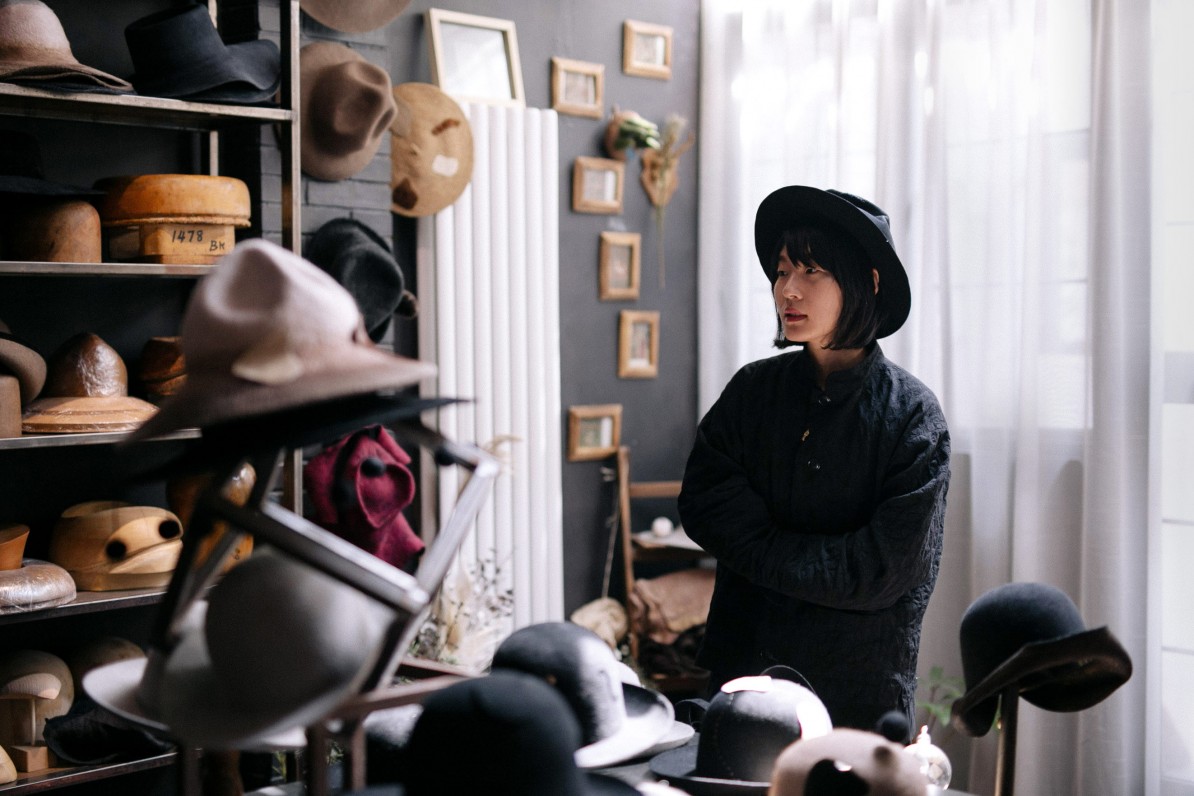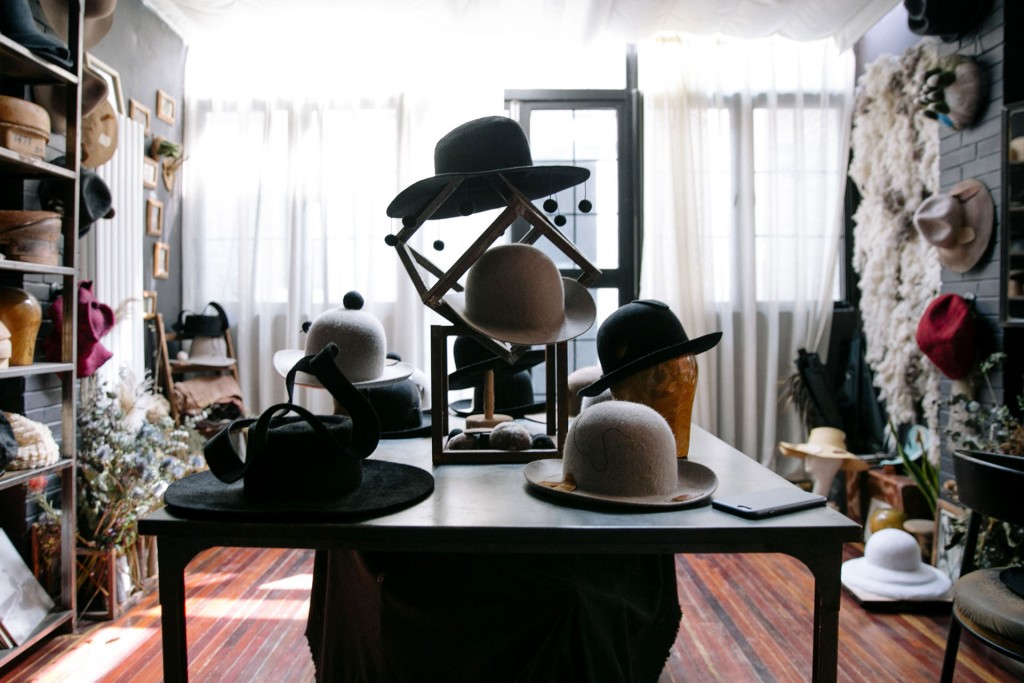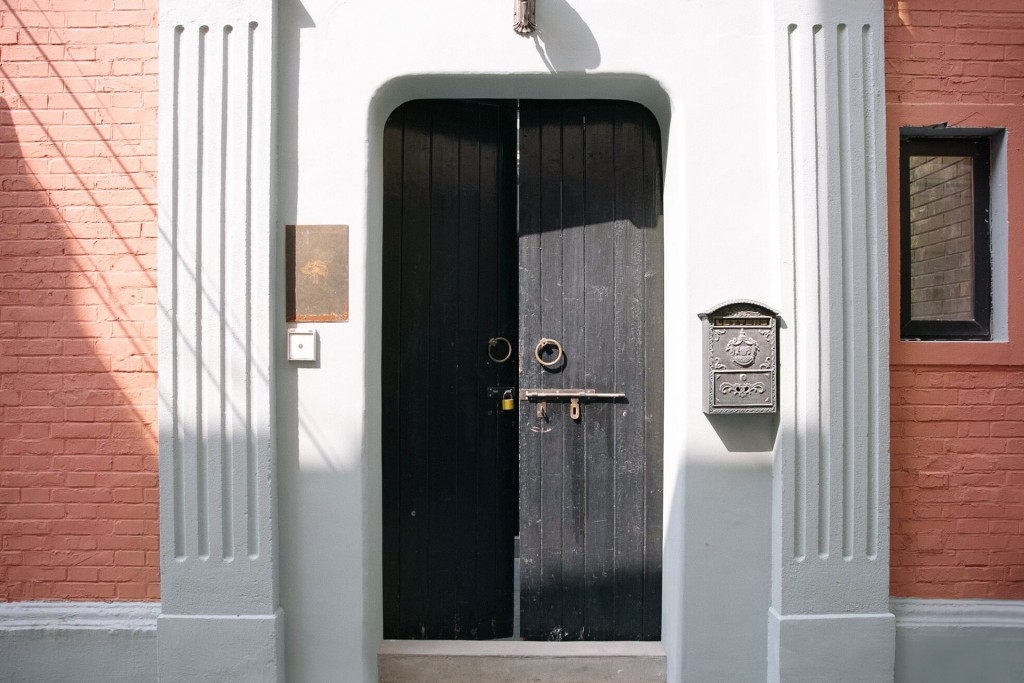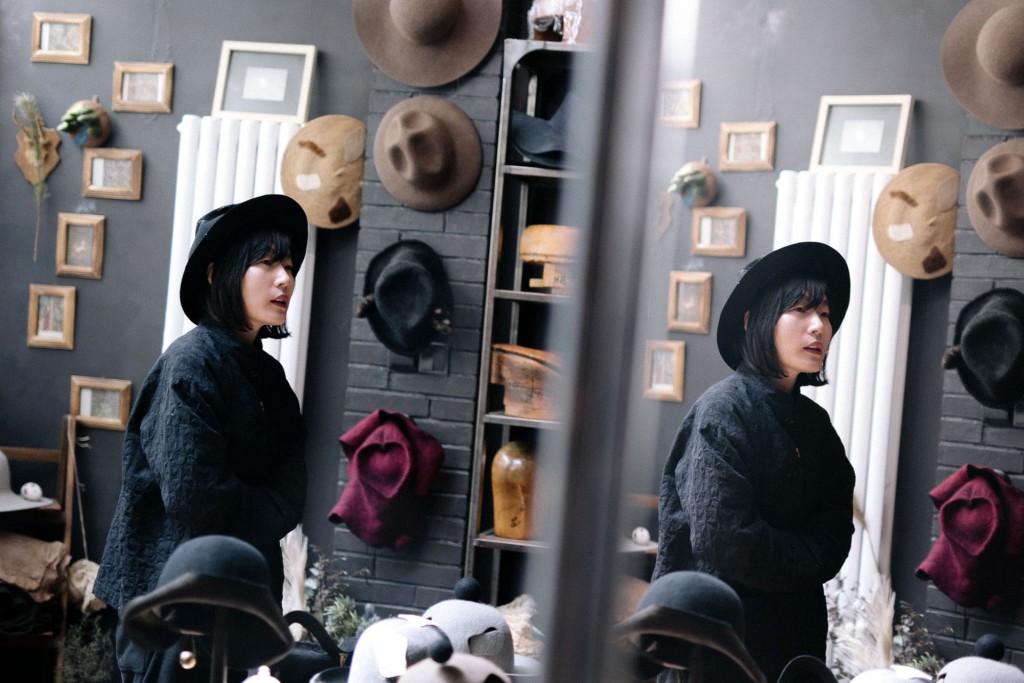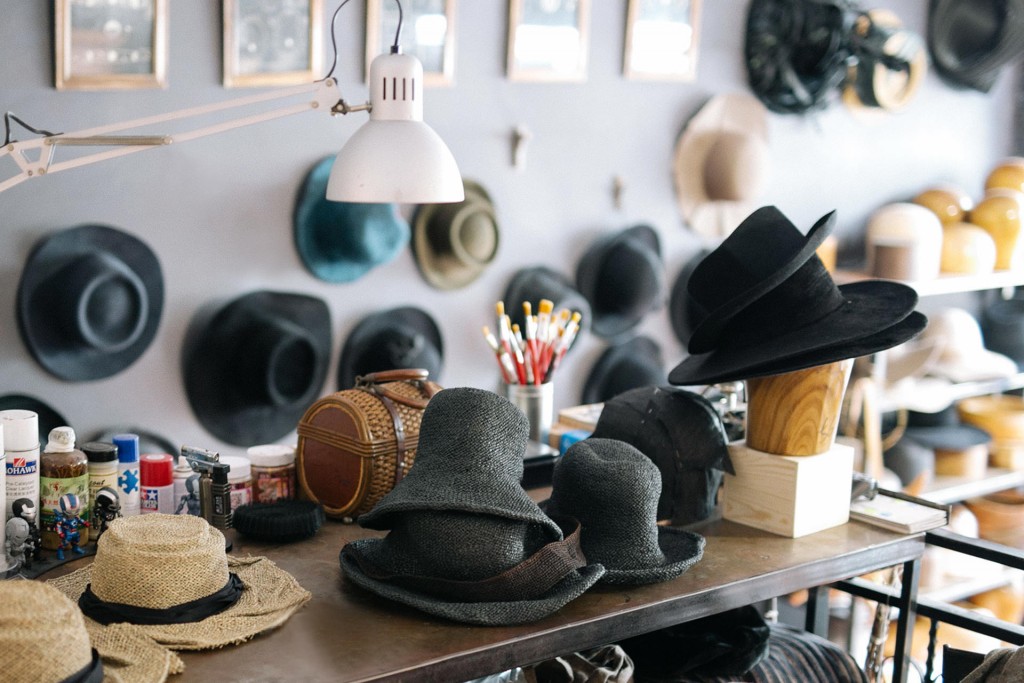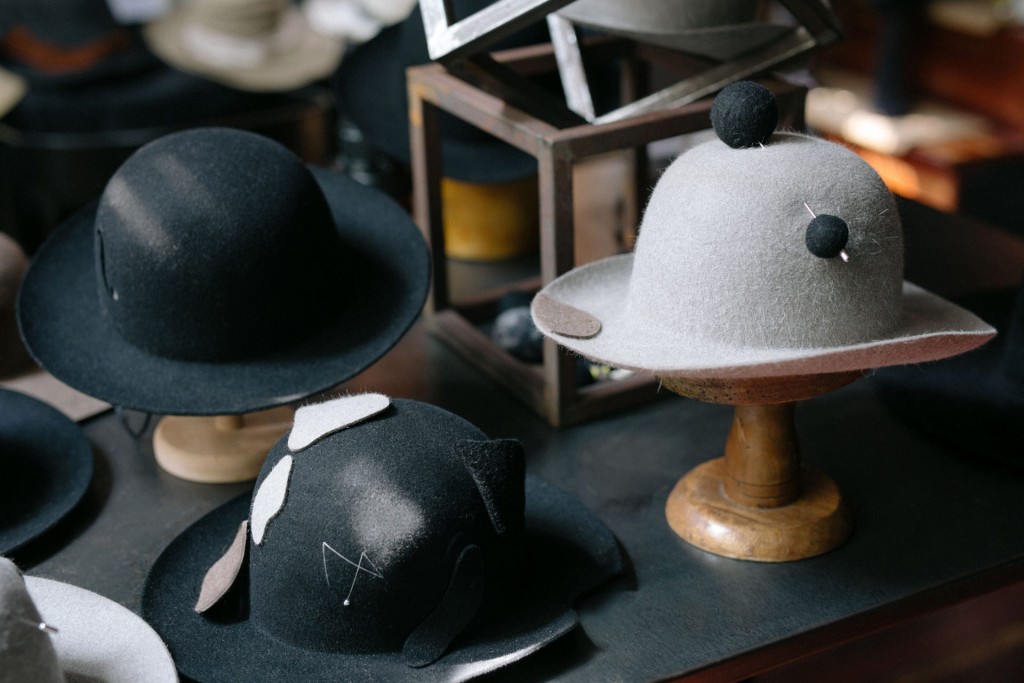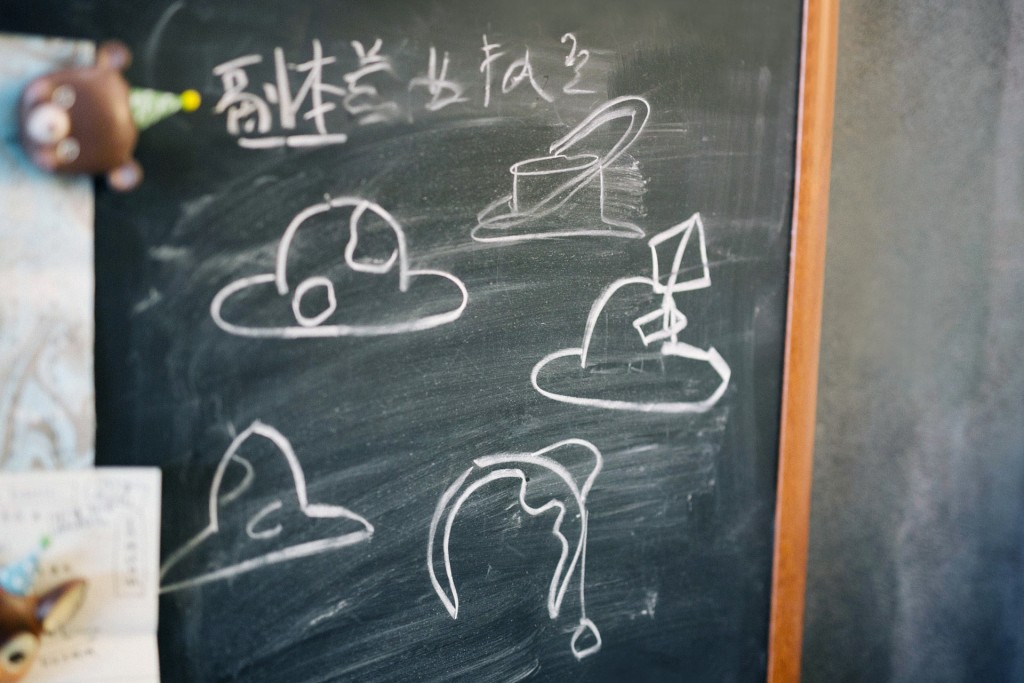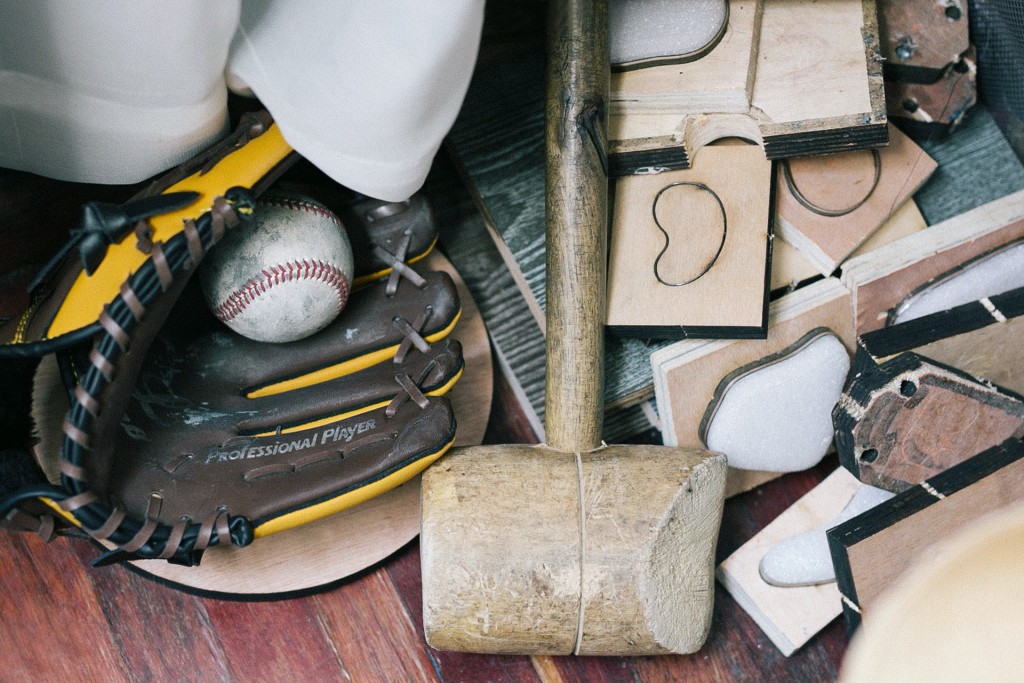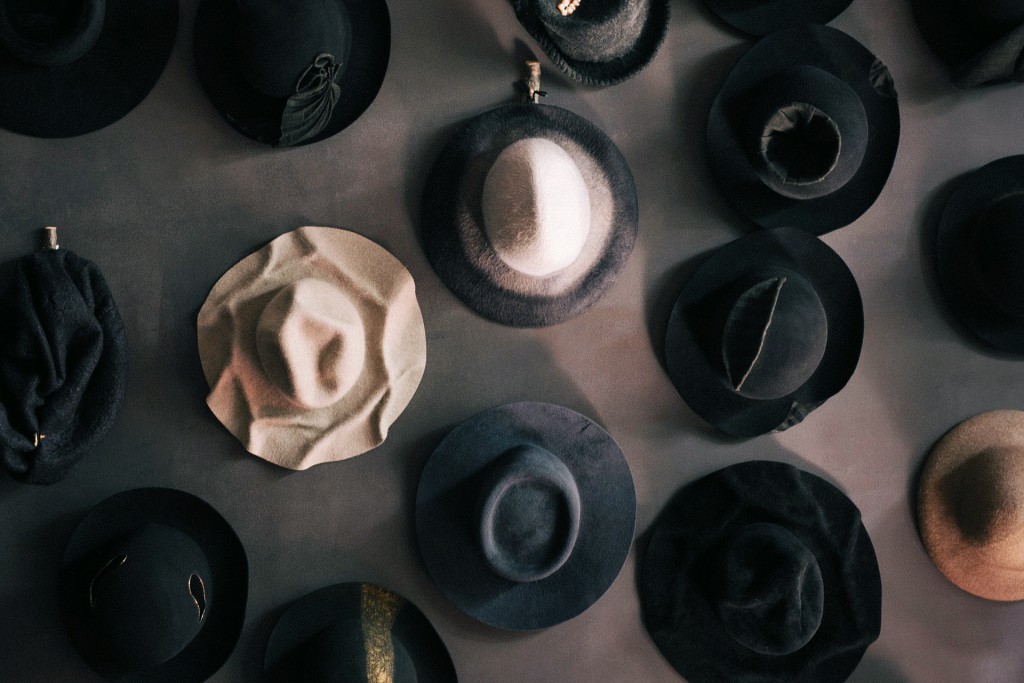made by hand series —
The first time we met Danielle in Shanghai was in her workroom, Studio Kreuzzz, fitted in Shanghai’s alleyways. The small, quiet and magical space was a stark difference to Shanghai’s ever-changing landscape. Shy and quiet at the beginning, the moment Danielle started talking about her hats, she looked like a child, eyes shining with excitement as she shared her hat stories and why she started making hats in China.
Written and Photographs by Kat Leung
Growing up, Danielle loved art, music, and sports. In college, she majored in International Economics and later went on to Scotland to study for a Masters in Service Design. Danielle’s life never crossed paths with hat-making, but when she took a class in Child Art Therapy for her Masters course, she tried her hand at making felted wool hats. These curious designs and colorful varieties look like whimsical fairy-tale sculptures on the head. In 2014, Danielle showcased these hat works at an exhibition called “Through the Looking Glass” held in Guangzhou. The hats received great acclaim and sold out in a month. “I never thought that people living in such a hot region as Guangzhou would be interested in felted wool hats.” The exhibition gave her some much needed courage to take it to the next step—she decided to go to Australia to learn about traditional millinery (hat-making) skills. Later on, she designed a collection of hats for Xiamen fashion designer, Dido Liu, and her brand, Deepmoss, which were showcased during Shanghai Fashion Week. In 2015, Danielle planted her roots in Shanghai and opened her own millenary studio—Studio Kreuzzz.
“Hat-making is very time consuming. I don’t want to waste my time doing things that I don’t like.”
Everyone knows it’s not easy starting a business in Shanghai. Danielle started off with re-painting a tiny, old house she found in the alleyways of Shanghai. Shanghai’s warm sun shining onto an all-black wall makes the space look like a small, hidden, magical antique store that displays all the hat blocks and rare materials she’s collected from all over the world. This is the place where she makes her hats, displays them, and hopes that her customers can visit to pick out a hat that best suits them. “At the beginning, I thought customers would like to come here and make bespoke hats. Later on, I realized people just wanted to buy something they could take home immediately. So I started making a few display items according to my own experience.” We asked if she had a favorite out of the hats displayed in the studio. “I’d have to like them all to want to display them here. Hat-making is very time consuming. I don’t want to waste my time doing things that I don’t like.”
Originally from Fujian province, but now living in a fast-paced metropolis like Shanghai, Danielle has been influenced by the city’s need to do everything extra-fast and efficiently—she even talks faster now. “Everything here runs on a tight schedule. I’ve participated in fashion weeks for a few times, it felt like you were so busy you couldn’t stop, because if you did, you’ll get all nervous and feel a lot of pressure—afraid you won’t be able to pay next month’s rent—luckily, I’ve always been rewarded for my hard work.” What she means by “rewarded,” is that she’s found quite a few people who admire her work and understand that she’s creating something that’s traditional yet unconventional, especially since the cost of hat-making doesn’t come at a pretty price—you have to keep collecting materials while making these hats, almost spending as much as you make, so it’s hard to make large profits out of this business—the reward, however, is that she gets to make truly luxurious pieces for her customers, a delightful challenge. In fact, in the Chinese community, there are very little hat-makers like her, nor are there any millinery studios like hers in Shanghai. Even if you could find a similar studio, they mostly make show pieces, instead of hats you can wear every day. Plus, her hats are much more expensive that ordinary ones, some are even priced nearly as much as those from major fashion houses. “But, luckily, I’ve met some customers who really love hats. They even bring me some unique hats that they’ve found somewhere else.”
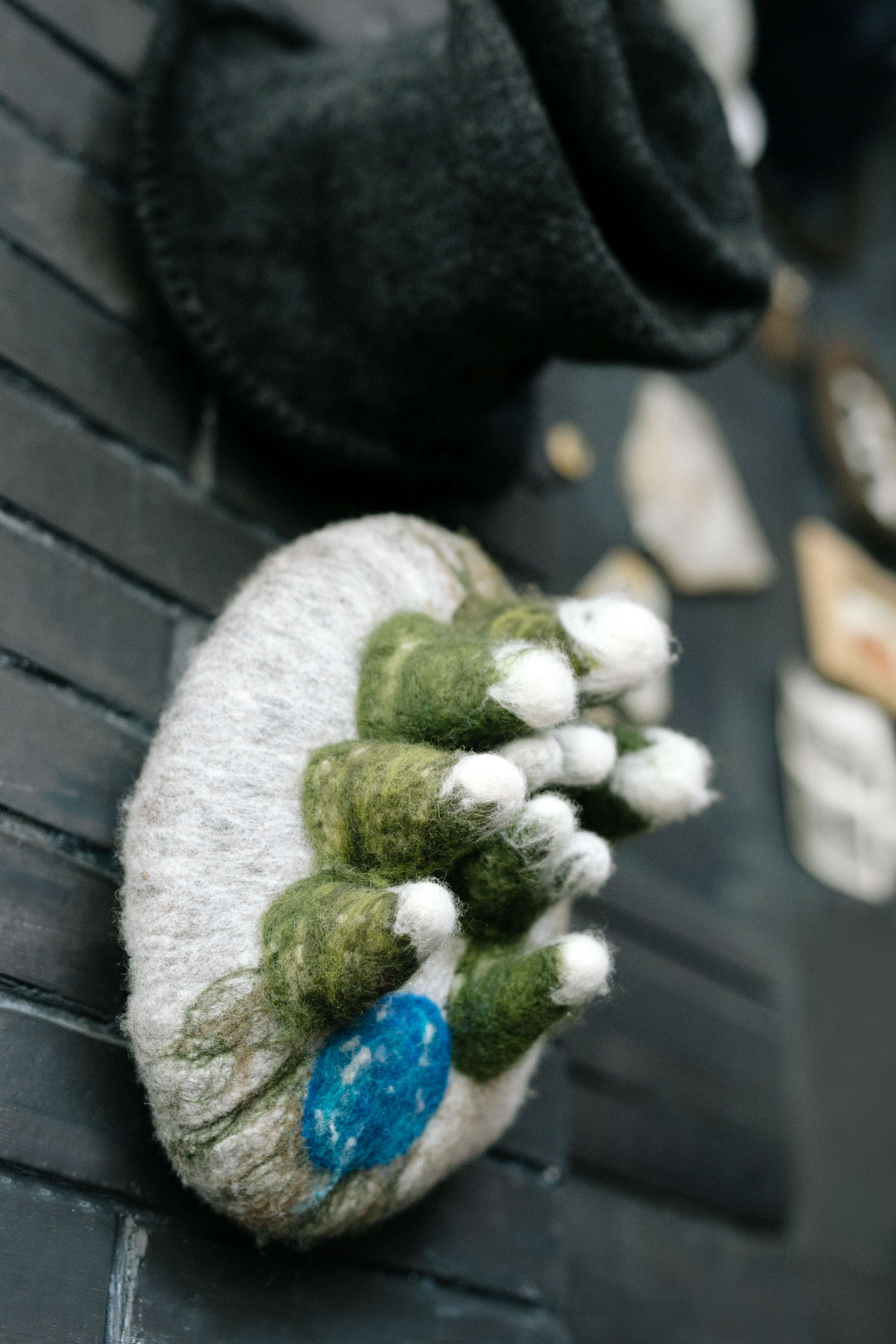

“I’m very confident in my hats, but not so much in other areas.”
When we asked why she likes making hats so much, Danielle explained slowly: “As a child I really liked drawing and doodling but I’m not that good at it. But when I’m making hats, I feel as if I’m drawing. Hand-making something brings unlimited possibilities, it makes me feel free, unlimited by the materials I use. I believe that I’m very confident in my hats, but not so much in other areas.” At the moment, she has two collection of works: “Kreuzzz Original,” which she has been making since she established her brand, is a collection of felt hats that combine natural and whimsical shapes of creatures including animals, plants, and tree branches; the other collection, “Kreuzzz Atelier,” started after she embarked on learning high-end millinery skills—these hats are for everyday wear and are generally simpler, low-key creations that differ in detail, texture, material, and technique.
“Anything light and can be comfortably worn on one’s head can be a hat.”
Compared to Europe, America, Australia, and Japan, places where they have a certain culture and custom when it comes to hat-making, China is still in its startup stage, with a very little base to build on and much more to learn. But to Danielle, the definition of a hat is quite simple: “Anything light and can be comfortably worn on one’s head can be a hat.” So even though traditional hat-making countries such as Britain and France are the typical authorities of the hat-making schools, Danielle didn’t focus on learning too many skills related to traditional embossing techniques or complicated designs and accessories. Instead, she goes for less traditional designs. Plus, foreign traditions have little connection with her own background and upbringing, another reason why she has no desire to go down that path. “Putting all sorts of fruit on your head doesn’t equal millinery art.” In her work, you won’t even find feathers or sequins—everything is simple, low-key, and suitable for everyday life.
“A lot of the hat shapes you see here were created by myself. I don’t make ones that are too unique, or much of those traditional, circular head pieces. I might do that in the summer because summer hats are more for daily-wear. I’ll change the shapes and designs, which most machines have a difficult time making, so it must all be made by hand. Material wise, I use rarer materials, such as rabbit or ferret fur, or China’s traditional, hand-made summer textiles with weaving techniques that have been passed down centuries. I’ve also found inspiration from the golden lacquer homeware found in my hometown, Fujian; I plan to learn how to incorporate that gold into my hats.” She humbly adds: “I always want to do something different. Even though my technique may not be great, I won’t regret anything if I at least try to materialize my ideas.”
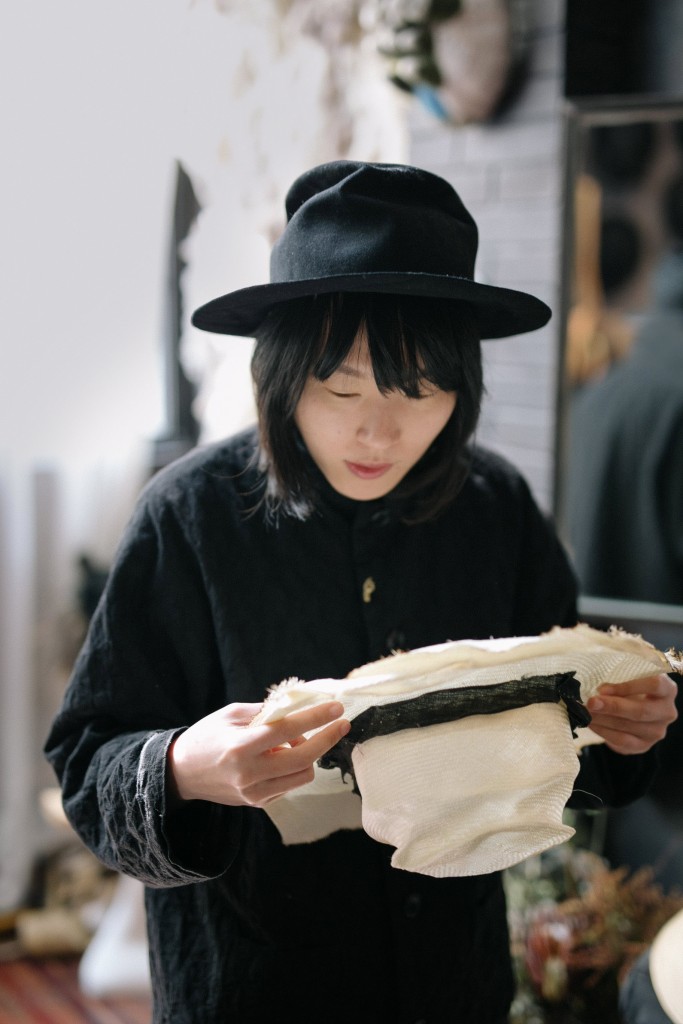
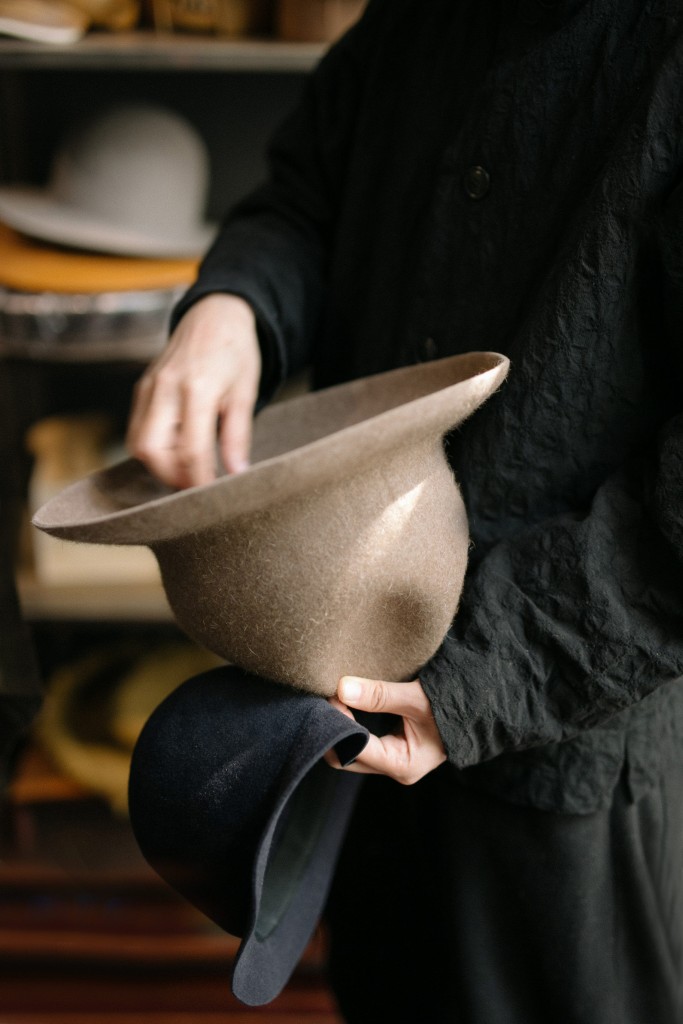
Hand-making things takes time and is hard to control. In our interview, Danielle mentions how costly, tiring, and time-consuming hat-making is. But another reason why Danielle prefers hand-making her creations, more or less has to do with her background in Service Design. She wants to make less impact to the environment and resources; for example, the wool she uses in her hats, from the raw material sourced from farms, to its production and design, actually has very low impact to the environment and natural resources. This is how she chooses to make a difference. A good hat can be worn for a long time; it also creates a unique sense of intimacy with those who wear it, which is another way one can, once again, appreciate the value of this item.
Yet, because she’s not mass producing her products, Danielle has a hard time deciding what to do with her startup business. Should she sell her designs in bulk? Or should she work from her own little base? Everything is still in adjustment. “I produce very little amount of work, so it’s impossible to sell like normal fashion designers.” At the moment, there aren’t many stores that carry her line; she usually chooses shops that have ideas and tastes similar to hers. “For example, Kian’s Autumn Sonata, a fashion select shop, is one of the stores that sell my hats because they have very good knowledge about them, they know how to introduce my work. I don’t need to train them myself or tell them how the hats should be worn. We work rather well together.” A lot of store fronts from all over the country ask if they could sell her hats in bulk, but Danielle isn’t comfortable putting her hats into their hands. She’d rather sell her hats little by little, slowly but surely. “Trustworthy, brick and mortar stores are still very valuable and important to hat-makers.”
The team at Studio Kreuzzz is a small one—it’s basically just her and an assistant. Many of their hats take days to hand sew. Danielle sometimes makes whole collections for designers but most of the time she makes her hats one at a time, designing each one as she focuses on making them. She says it’s a good thing that she always gets to meet like-minded people and those who work well with her. Between her busy schedule and creating new looks, she also travels abroad to purchase materials. That’s when she gets to absorb new ideas and inspiration. But it’s hard to imagine that her favorite past-time is actually playing baseball. “Sports is very important to me. It’s a pure joy. One does not have to worry about earning fame or fortune like at work, it simply makes me happy.”
At the moment, she can boldly use materials she likes without having to worry much about the costs or losing profit, but she still has some ideas in stock for the future: “I hope that, within five years, I can earn more profit commercially. To me, not all of my hats need to be made by hand. If I find a good factory to work with, I think that would be great, too.” She’s still figuring out her next step, afraid of making rash decisions that will lead her down the wrong path. She’s taking her time because she believes people will become closer with hats. Her works are filled with her imagination of this world and filled with energy. She will continue to project the simple happiness that hat-making brings into her life, into the hats she makes, and into the lives of every one of those who wear one of her creations.
